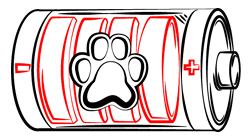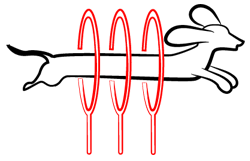
Paws ‘N’ Pups Quickview
Size
| Energy Level
| Trainability
| Paws ‘N’ Pups Rank
|
Characteristics
| Physical Characteristics: Height: 12-16” Weight: 11-22 lbs. Energy Level: High | Colors: The Pocket Pit Bull is found in the following colors:
|
Health & Longevity
Average Life Span: 11-13 years
The Pocket Pit Bull is bred from a hybrid between the American Pit Bull Terrier and the Patterdale Terrier, so they may experience health problems common to both breeds, although they are mostly healthy.
Hypothyroidism, in which the thyroid gland does not produce sufficient hormones, is one health issue that may impact the Pocket Pit Bull. Hypothyroidism leads to problems such as obesity, infertility, lethargy, and hair loss. Treatment requires daily medication for the duration of the affected dog’s life.
Joint problems like elbow and hip dysplasia may plague the Pocket Pit Bull. Hip dysplasia is when the thighbone does not fit properly into the hip joint, causing pain and potentially leading to arthritis. Ensure that your puppy’s parents have no history of hip dysplasia; dogs with hip dysplasia should not be bred. Elbow dysplasia is when a malformed or weak joint results in pain, arthritis, and, in severe cases, lameness. Treatment includes health and weight management, anti-inflammatory medication, and potentially surgery. Both conditions are degenerative.
The Pocket Pit Bull may also experience heart disease, eye problems like conjunctivitis, and allergies.
The majority of Pocket Pit Bull’s are healthy with relatively few, if any, of these problems, and the average lifespan for this breed is 11-13 years.
Temperament & Train-ability
As with all mixed breed dogs, the temperament of a Pocket Pit Bull may vary, because he can have any combination of qualities possessed by his parents. In general, the Pocket Pit Bull is affectionate, loving, and friendly, especially with his family. He is also loyal and protective, with high energy levels requiring adequate stimulation. He is intelligent and eager to please.
The Pocket Pit Bull is not well suited for an apartment. It is best if he lives in a home with a fenced in yard, giving him plenty of space to stretch his legs, run, and play. He also requires an owner who has the time and the willingness to exercise him adequately, or he will exhibit behaviors such as aggression and destructiveness. The Pocket Pit Bull needs both physical and mental stimulation and is a good choice for an active family. Be prepared to run, walk, and play with your Pocket Pit Bull daily. They are playful and enjoy games or walks in the park. This high level of activity is essential for ensuring your Pocket Pit Bull has a pleasant temperament. Stimulate his mind with interactive, enrichment, or sensory toys.
Although the Pocket Pit Bull rarely barks, he will bark if he feels his owner needs to be alerted to danger. For this reason, and because he is very brave and protective, the Pocket Pit Bull is an excellent watchdog. In general, the Pocket Pit Bull can do well around children if he is properly socialized. Still, like all dogs, he should be supervised around younger children. He may be dog aggressive if he is not properly trained, socialized, and exercised, and he may be reticent with strangers. Like the Patterdale Terrier, the Pocket Pit Bull has a strong hunting instinct and may chase and hunt smaller animals, although this can be addressed with training and socialization. Even so, it is wise to supervise a Pocket Pit Bull around small pets.
The Pocket Pit Bull’s independence may make him slightly difficult to train, but starting from an early age can rectify this problem. He may have a natural desire to be the leader of the pack, so it is important to establish that you are in charge from the beginning. Once you are his firmly established leader, he will be eager to please you. Due to his intelligence and athleticism, positive reinforcement can go a long way in training a Pocket Pit Bull , along with firm, consistent rules and expectations. Training a Pocket Pit Bull is important in order to keep difficult behaviors under control and to prevent him from becoming overly energetic, restless, or destructive. Early socialization is also important; otherwise, the Pocket Pit Bull may be aggressive or unfriendly towards other dogs and aloof with strangers.
Grooming
The Pocket Pit Bull is fairly low maintenance; they do not need to be bathed or groomed too frequently. They are moderate shedders, but shedding can be kept under control with a relatively quick weekly brushing of the Pocket Pit Bull’s short coat. They are known for the thickness and shininess of their attractive coats.
Bathe your Pocket Pit Bull as needed, and ensure that his ears are clean and dry after each bath. Check ears regularly for possible signs of infection including redness, tenderness, and odor. Trim his nails when they become too long in order to prevent cracking. Brush teeth at least two to three times weekly to avoid bad breath and maintain healthy gums.
Diet
The Pocket Pit Bull should consume about 3/4 to 1.5 cups of a premium brand dry dog food per day. Of course, the best type and amount of food for any individual dog depends on variables such as gender, age, metabolism, activity level, and size. A formula made for small breed dogs is a good choice for the Pocket Pit Bull , as is an active breed formula if your dog maintains a particularly high activity level. This breed does gain weight easily, so be sure you do not overfeed your Pocket Pit Bull.
Be sure your Pocket Pit Bull always has access to clean, fresh drinking water.
Looking for a Pocket Pit Bull ?
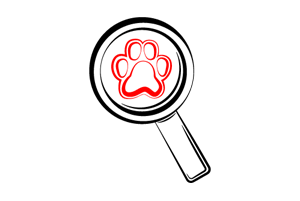 Find A Pocket Pit Bull Breeder |  Pocket Pit Bull Puppies For Sale | 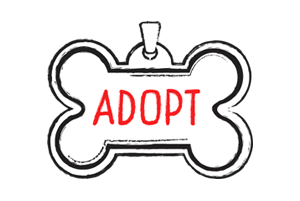 Adopt A Pocket Pit Bull |
Cost
The average Pocket Pit Bull costs around $1100, due to the fact that they are a designer dog and thus relatively scarce. However, you can find dogs ranging from $500 to $3000.
Adopting a Pocket Pit Bull is also an option. Expect adoption fees to cost around $175.
Paws ‘N’ Pups Ranking
Paws ‘N’ Pups ranks every breed out of 4 with 1 being easiest to integrate into your life and 4 being the toughest – The lower the ranking the better.
Ranking takes into account a few basic factors including cost, skill level needed, high vs low maintenance and how critical regular training is to success. The Pocket Pit Bull ranks a 3. He is fairly healthy, sheds minimally, and does not require excessive grooming or bathing. He is loving towards his family, and his protective nature makes him an excellent guard dog. However, he requires plenty of exercise and play to ensure he does not become destructive or aggressive, and early socialization and training are absolute musts.
Breeds Similar To Pocket Pit Bull
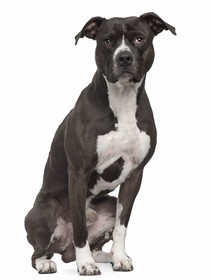 American Pit Bull Terrier | 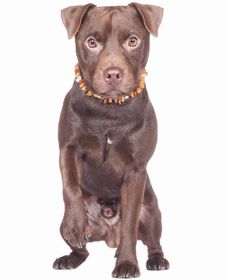 Patterdale Terrier |  Smooth Fox Terrier | 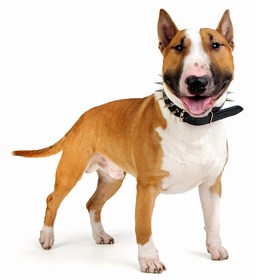 Bull Terrier |


